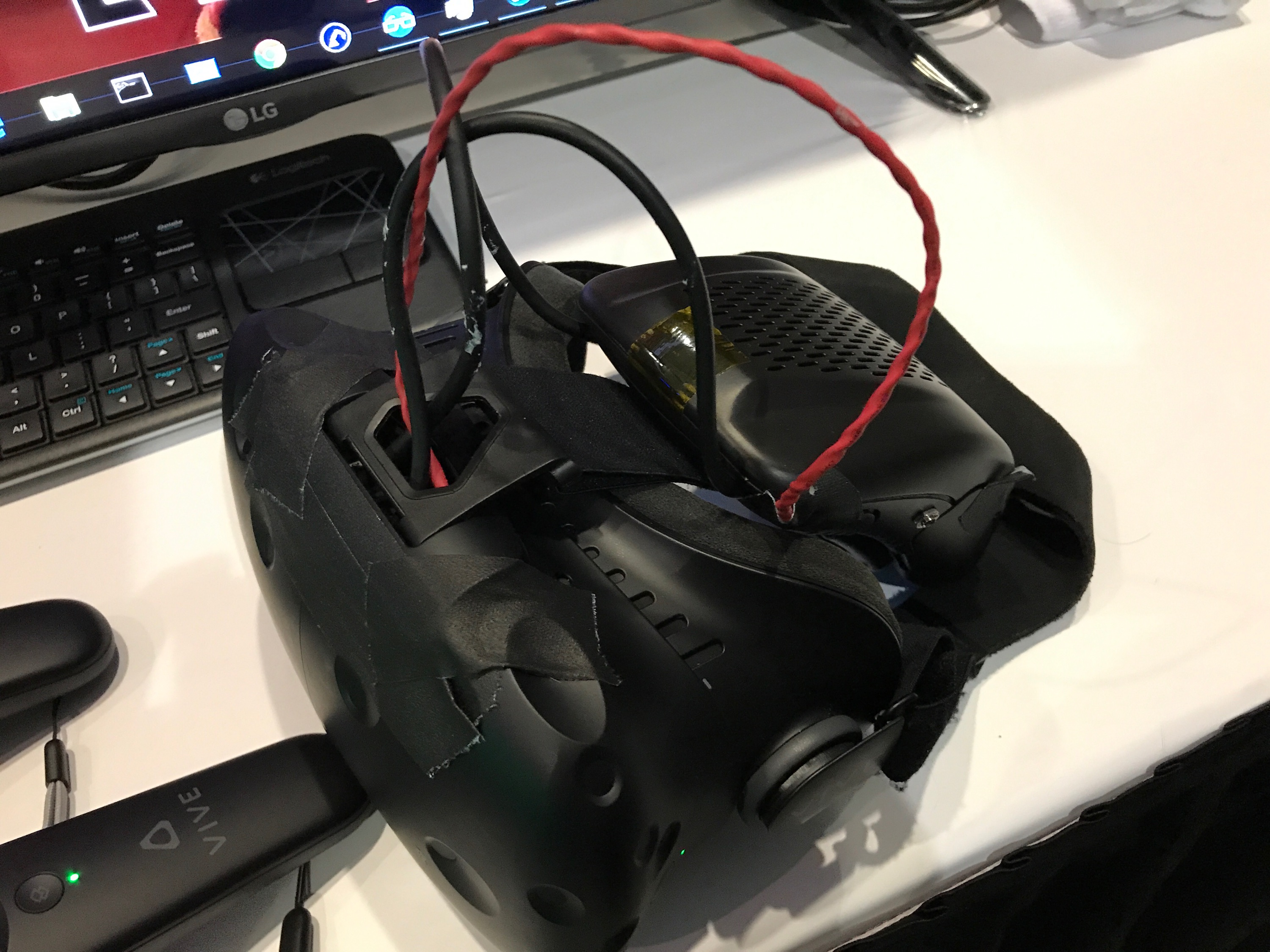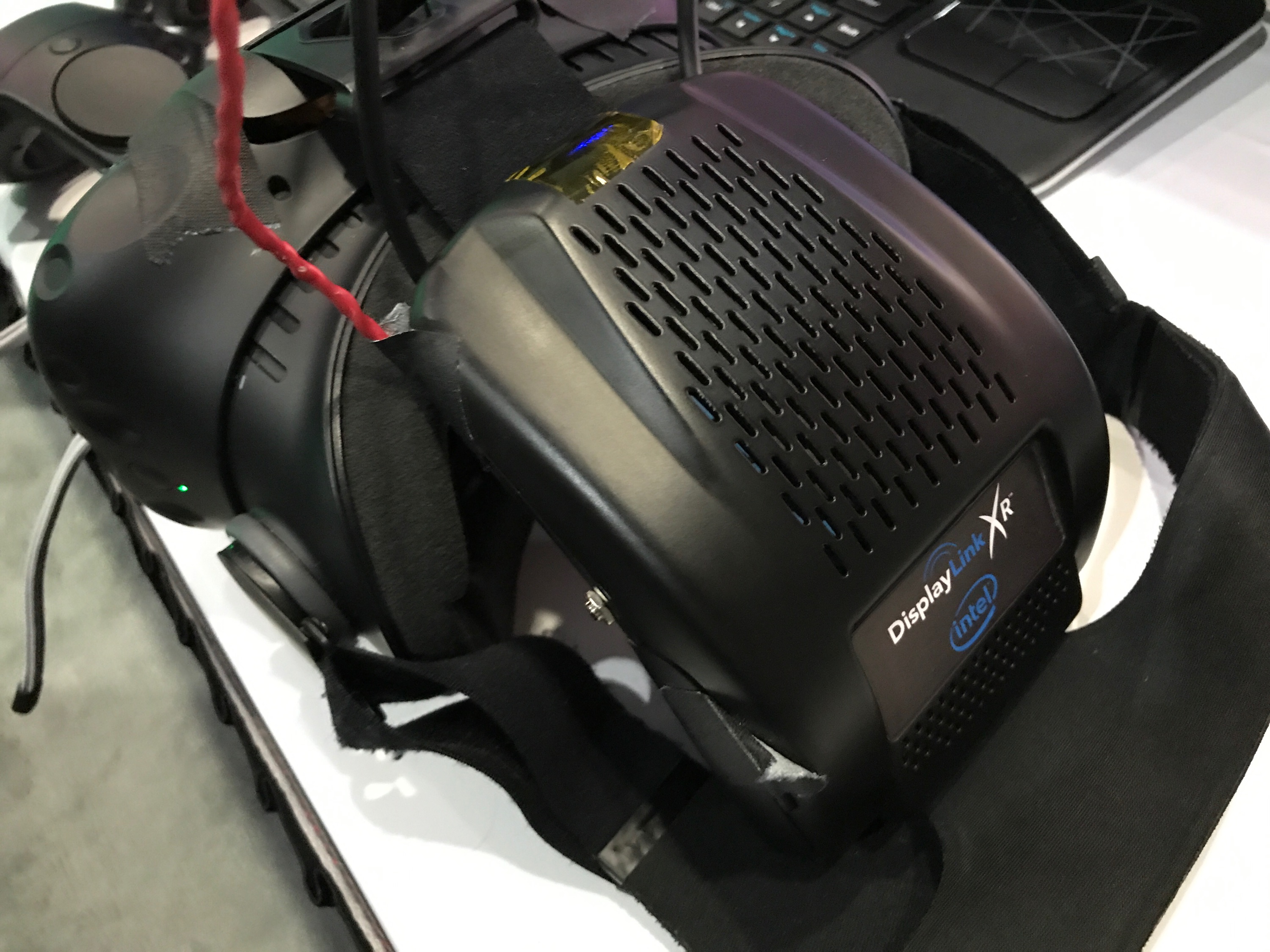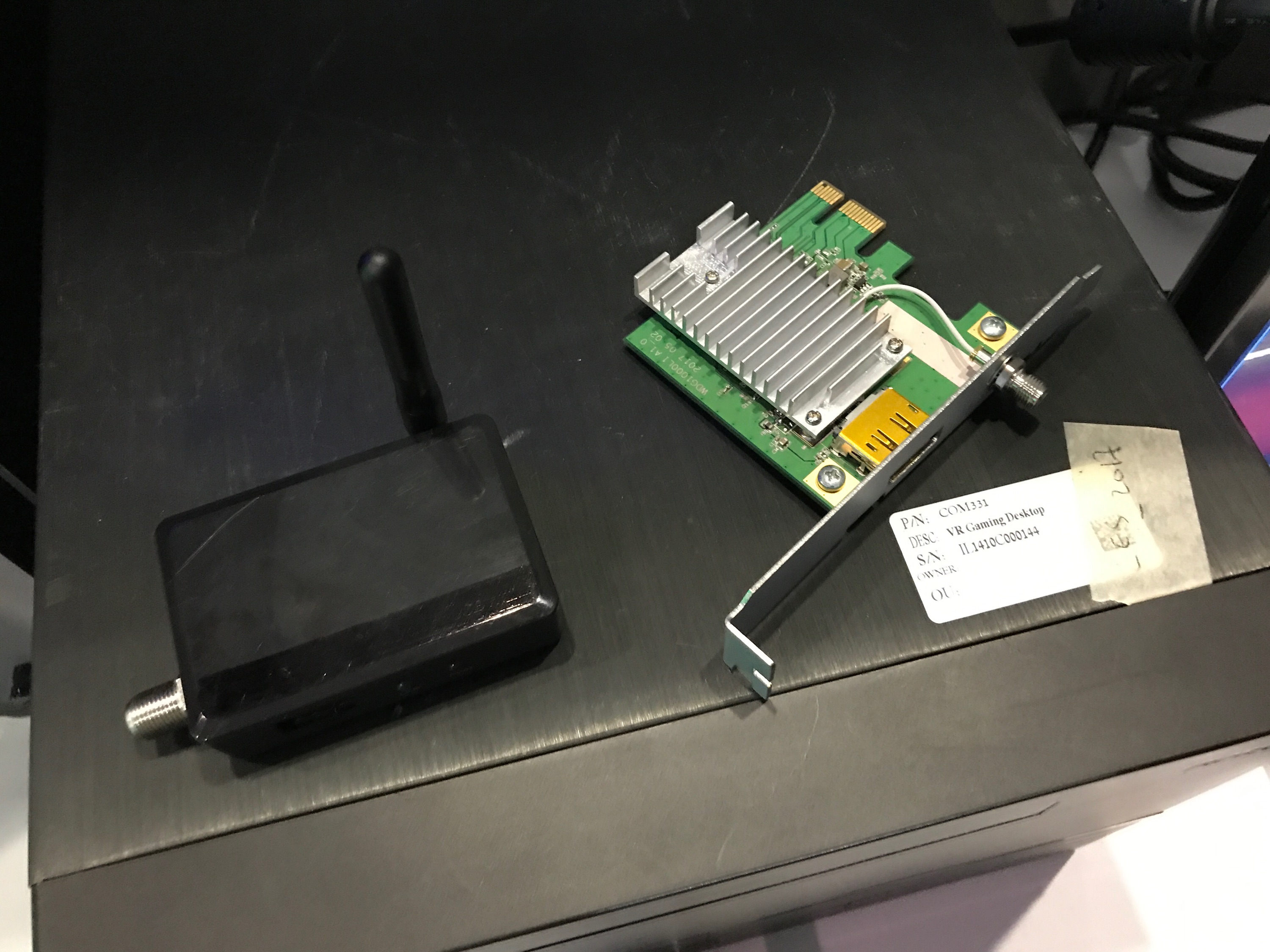I tried Intel's wireless Vive VR headset, and I want one
I'm never going back to wired VR after this.
While the rest of the team made their way through the endless sea of games, I went and visited Intel to demo its new partnership with HTC on a true wireless solution for its Vive VR headset.
The prototype was a retail Vive headset that had its wires plugged into a WiGig unit Intel created that provided both image lines and power. There was no mention of how long the unit could stay powered, but expect a retail version to last at least 2 hours.

I was given a chance to play Space Pirate Trainer, a game where you shoot and block incoming attacks from an endless swarm of drones. The game gets intense and was the perfect demo for showcasing the free movement that comes with a WiGig equipped Vive.
WiGig is a new standard based on 802.11ad which transfers at gigabit rates over a 60GHz spectrum. While the spectrum is uncluttered, it does require decent line of sight. Intel says that its WiGig transmitter and receiver used on the Vive has a latency of less than 7ms and is enough for a fluid VR experience. My experience with Space Pirate Trainer felt exactly as it did when I played on the tethered Vive, which seemed promising. However, the Intel rep noted that I got shot and died pretty frequently, but I reckon that's more to do with my horrible shooting skills than any technical difficulty.

The WiGig prototype unit was strapped onto the top of the Vive headset, which made for a much heavier feel. Intel did not use the recent Deluxe Audio Headset that HTC released, which would have made for a much more comfortable experience. While making sudden movements, I could feel the module bob around on the top of my head, which was slightly distracting, but I'll chalk that up to it being a taped-down prototype.

Intel mentioned that its transmitter was simply a small PCIe x1 add-in card that would work in any PC—though you'll have to have a motherboard bigger than a mini-ITX to take it. Plans are to have WiGig be integrated directly onto motherboards in the future, but right now there's no firm timeline.
Although my game time with the wireless Vive headset was short, it was exactly what I wanted from the initial release of the Vive and Rift headset. Having wires everywhere is a huge pain and injury risk and complicates the overall experience.
The biggest gaming news, reviews and hardware deals
Keep up to date with the most important stories and the best deals, as picked by the PC Gamer team.
Companies in the VR space know that to truly take VR mainstream, wide consumer adoption needs to take place. Two things need to happen before that occurs: great content and true ease of use. Right now we have neither, but we're slowly getting there.


